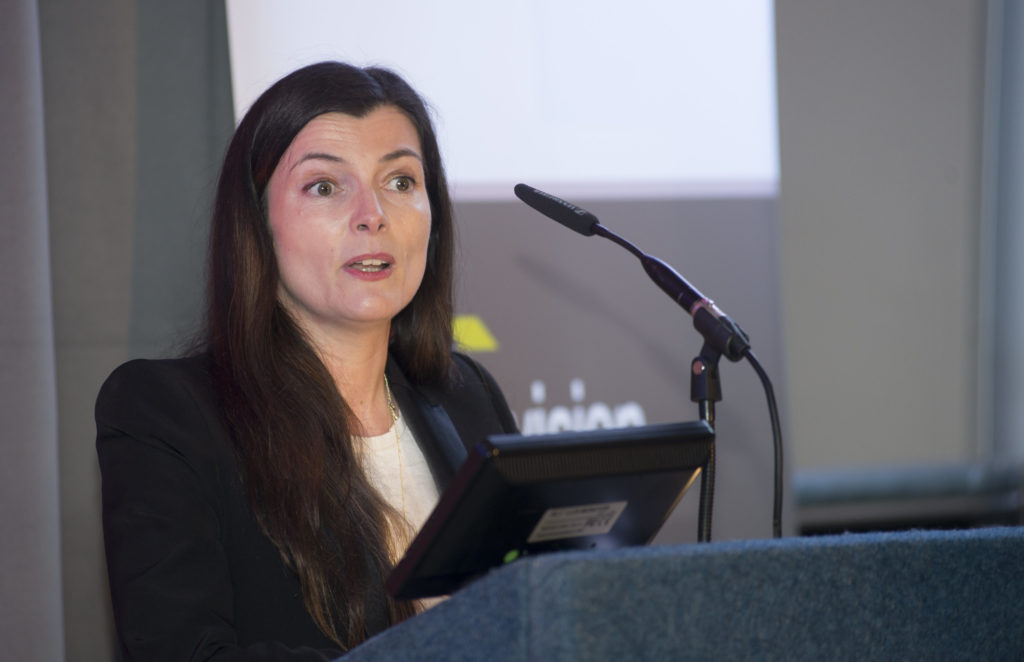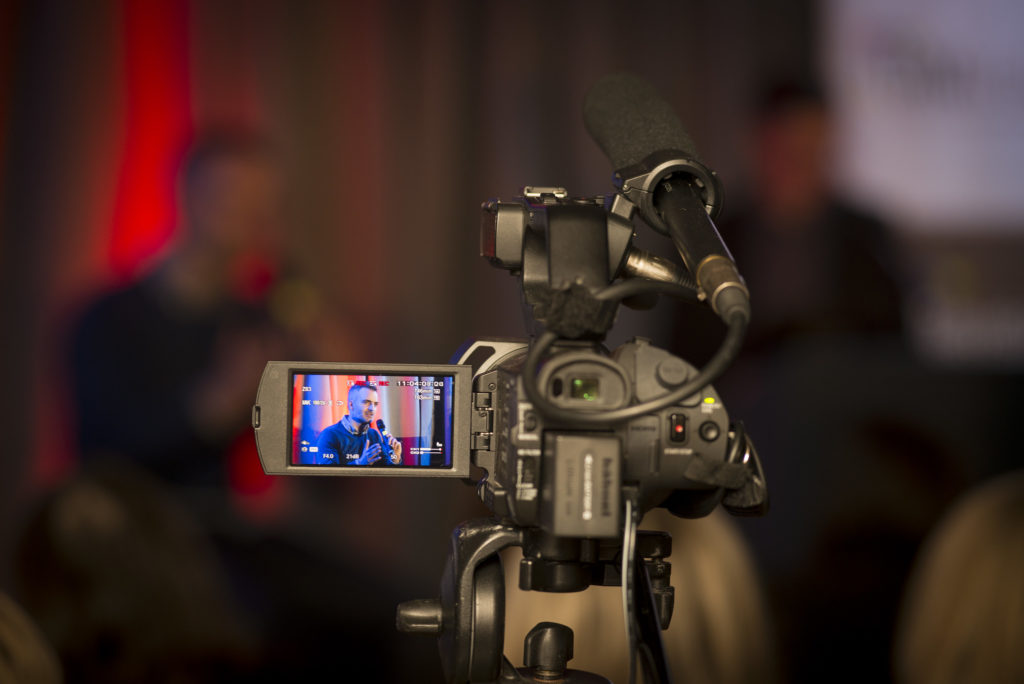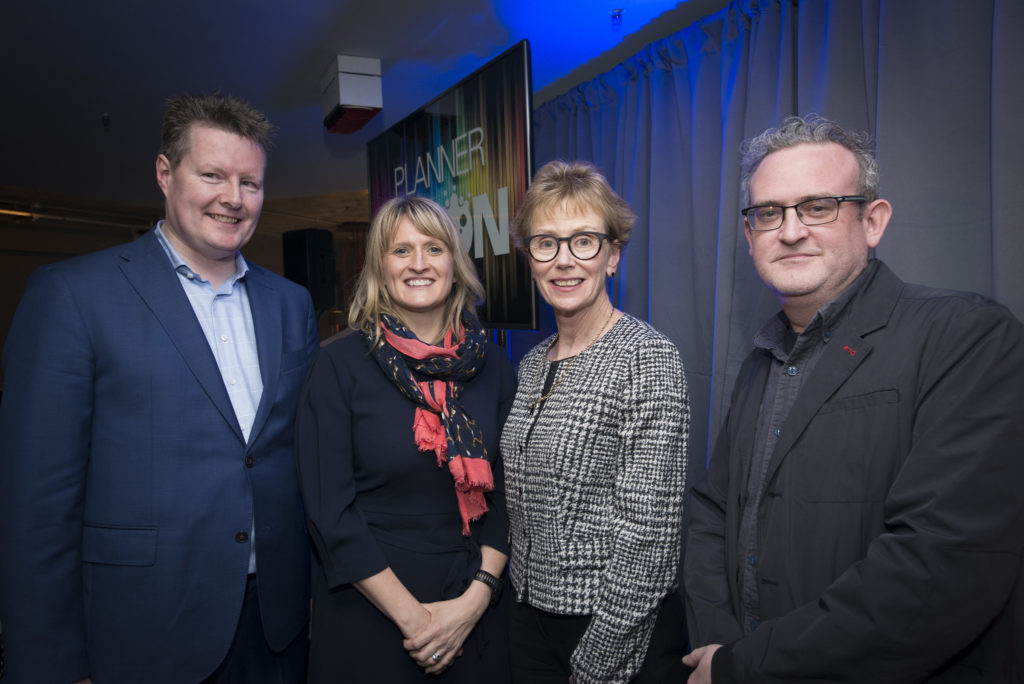TAM Ireland – Plannervision 2020
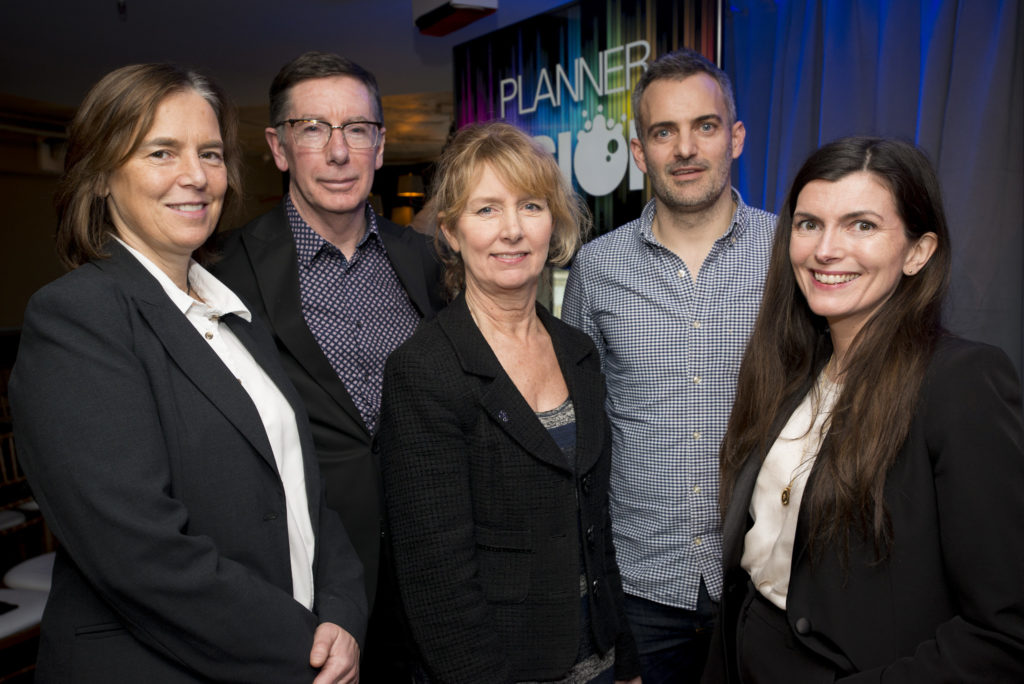
On Tuesday, 28th of January, TAM Ireland hosted guests from all over the marketing industry for Plannervision. As William Bruce Cameron said, "Not everything that counts can be counted, and not everything that can be counted counts", with that in mind, the theme this year was "Are We Measuring What Matters?". The morning featured presentations and panel discussions from clients, creative agencies and auditors to find out if the media industry over-emphasizes what can be counted.
Sinead Cosgrove, Head of Brand Planning and Dunnes Stores
Sinead spent the majority of her career on the agency side working for Owens DDB and then Chemistry where she worked on the client service side as well as the planning side. Since May, she has been head of brand planning at Dunnes which gives her an interesting perspective on the effectiveness of different media.
She started her talk by claiming that TV has range and flexibility: it disrupts, it generates sales, it re-positions brands. In the hands of the right brand planner, TV can be used effectively for whatever your campaign goals are.
The medium is generally lauded for long-term effectiveness and this is well-documented by such experts as Les Binet and Peter Field. Sinead has found in her work with a retailer that TV also works in short-term to build awareness among all audiences.
She demonstrated this by using a Dunnes campaign as an example. Dunnes were already known for their €10 for €50 offer which worked for weekly shoppers. Research showed that following the financial crash in 2008 the number of irregular, split (those who split their weekly shop over a number of supermarkets) and top-up shoppers (those who supplemented their weekly shop with top ups throughout the week) had increased.
The discounters (Lidl and Aldi) share a lot of split customers with other supermarkets. These discounts are growing through a huge share of voice and TV is a key driver of growth for them. These brands often spend to have a larger share of voice than their market share. They also pursue an always on strategy, bombarding the market with messages about their value.
Dunnes wanted to target pre-family & young family audiences with their TV push. Their plan for this campaign was to go on the offensive and grow. As a result of their marketing spend, discounters had re-positioned value, by comparison Dunns and the other supermarkets were seen as a more expensive option.
The brand used TV to drive a campaign that established a new proposition: Everyday low pricing. The focus of this was 1,000 own brand products under €1. When it came to the marketing mix, they realised that TV had scope and scale for great storytelling. They chose TV as the lead medium to drive campaign and build awareness fast. By the end of three bursts of the campaign awareness was at 65%, their PCA showed that awareness of the TV element was 54% compared to 15% for the social campaign. Surprisingly young people had 75% awareness, with 59% awareness of the TV campaign for those surveyed under 25.
The one piece of advice that Sinead wanted to give to all clients was to set clear KPIs before the campaign and not to retro-fit success onto a campaign afterwards.
The four learnings she noted from the success of this campaign were:
- The importance of measures: Know what success means to you for this campaign and get measurement tools in place
- The Danger of anecdotes: No one would have said that TV would be the biggest driver of awareness for young people in this campaign. There’s an anecdote/belief that social media if the panacea for reach young people where that is demonstrably not the case.
- The variable of great creative: The ads had engaging entertaining creative that got the value message across succinctly. For every campaign, the creative is the magic dust that brings it to life.
- TV supercharges other media: using TV as the driver of your campaign creates a halo effect for other media. TV’s unrivaled ability to tell stories and reach us emotionally means that other media will be far more effective when paired with TV.
Though Sinead was unable to share sales figures we were told that the impact of the TV campaign was hugely impressive in the short-term and in the long-term. Dunne’s is fastest growing multiple in Ireland and has been the No. 1 supermarket for 17 consecutive months.
You can read Sinead's entire presentation by clicking here.
Jill McGrath, CEO of TAM Ireland
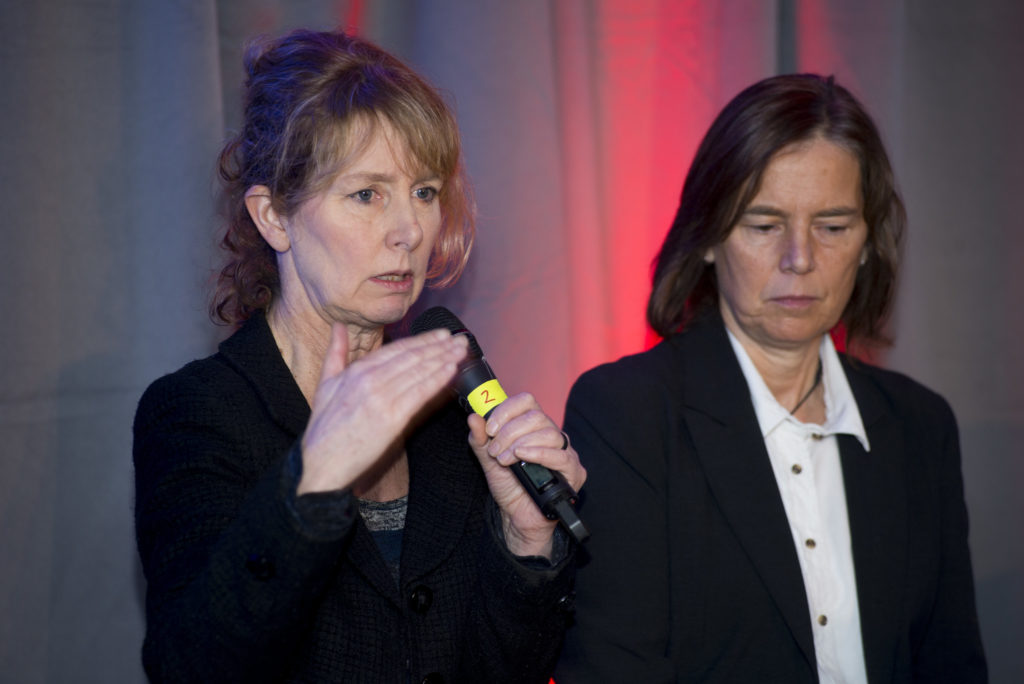
Jill McGrath from TAM Ireland spoke about how TAM is a JIC (Joint Industry Committee) working to “measure what matters” in an accountable, trustworthy and equitable way. Jill also gave an update on the streaming meter project.
Jill began her presentation by stating that what you get from spending time with content is emotion, which is why TV has proven to be such an effective medium for so long.
She stressed that impacts are time measured, while impressions aren’t. So you get a more consistent emotional impact from TV advertising than online. Too often as marketers we look for total control and control seeks out measurement tools, but as Rory Sutherland reminded us: “If something is not attributable it doesn’t mean it doesn’t matter”
Irish adults watch 2.5 hours watching live TV a day and they’re watching 27 minutes a day time-shifted. TV reaches 61.6% of households daily, 84.9% of households weekly and 94% of households every month. As Jill said in her presentation, “You can’t become a household name without reaching households.”
This all adds up to 80 hours of linear TV watched per month for the average person.
Jill then introduced TAM’s latest improvement to their robust measurement system: the streaming meter. The streaming meter which is fitted in the homes of the broadband panel, 300 homes from within TAM panel. Every device in the home is included and will give greater insight into people’s real viewing habits.
You can read Jill's slides by clicking here.
Zoe Harkness, Head of Planning at Thinkbox
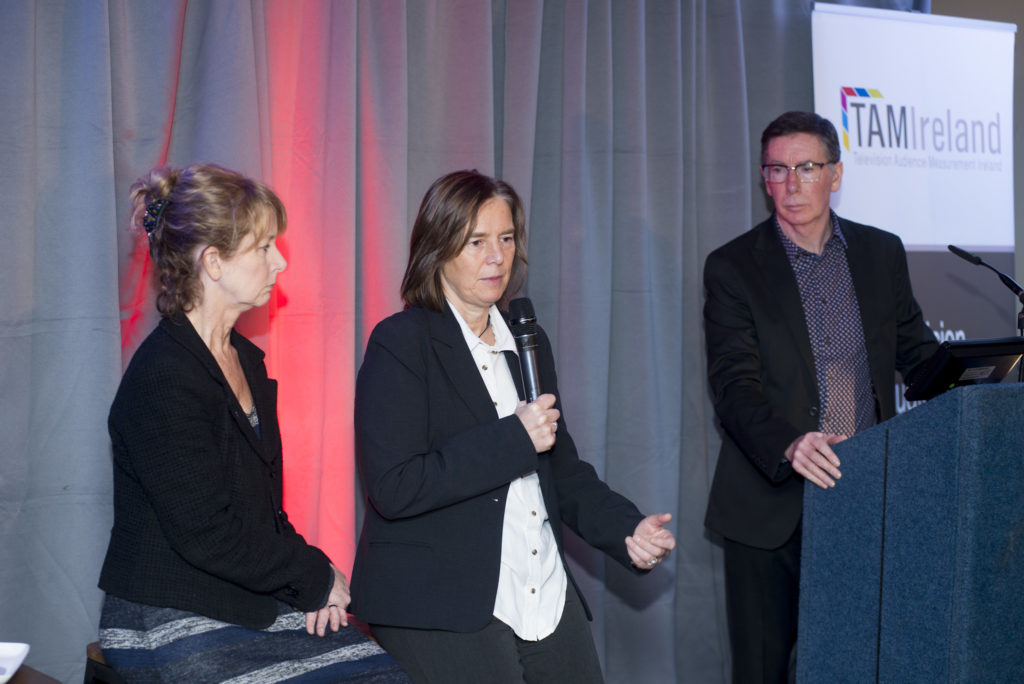
Zoe Harkness from Thinkbox spoke about their latest study: Demand Generation. They worked with Mediacom, Wavemaker and Gain Theory. They wanted to create a tool that would help media planners decide the most effective, and practical, routes to profitable planning.
The Demand Generator took 50 brands across 14 categories with a total of £1.4bn media spend. Their was variety across all metrics. The categories included FMCG, Finance, Retail, Automotive, Travel and more.
They looked at 11 media channels. They measured uplift in sales, ROI and diminishing returns for each media.
They saw a clear difference in media mix per category. So, while they got the averages across all categories and campaign goals this was only half the story. It was important to overlay campaign specific data over these averages to get a full picture of best practice. They called this tool the Demand Generator.
They found that the optimal media mix depends on six things:
- Brand context: What is the category, what is the percentage of online sales, brand size, niche v mass market
- Desired Outcome: do they prioritise growth (in which case they should maximise volume and reinvestment) or prioritise efficiency (in order to maximise return). In all scenarios they found that it’s not possible to do both, you must choose which you prioritise and be willing to sacrifice the other goal.
- Fulfilment costs: Zoe posited that online fulfilment should sit outside of demand generating budget. She stated that optimising between demand generation and fulfilment is a false choice. The client should understand which demand generation channels skew toward expensive fulfilment. Clients should experiment with turning fulfilment media, such as PPC, off to ensure they are incremental.
- Diminishing Returns: Focus on a specific target market builds excessive frequency over incremental reach. Broadening the target away from those most likely to use the service leads to greater reach and less diminishing returns.
- Payback timescale: Short-term vs long-term. PPC and Display deliver quickly but less sales impact overall. TV delivers well in the short-term and outperforms all other media in the long-term. Planning is key to maximising short-term response.
- Certainty: Variability of returns differ widely by channel. Risk is higher in online, social media and print. There is less risk in TV
It is also important to factor in the Halo effect, some channels boost the effectiveness of other channels, such as TV.
One thing that Zoe said that stood out was that “People tend to go for efficiency [not effectiveness] so they’re thinking smaller. A problem in the UK at the moment is short-termism”
Someone remarked that the Demand Generators use in Ireland is limited as the media consumption habits differ across Ireland and the UK. The Demand Generator also didn’t take into account creative. “Exceptional creative can help brands make an impact” according to Mark Ritson. The emphasis has shifted to media as a result of the rise of digital and this is only part of the picture.
You can read Zoe's slides by clicking here.
Rory Hamilton, Executive Creative Director at Boys + Girls
Rory Hamilton, the executive creative director at Boys + Girls began his presentation with the statement. Advertising without creativity is just process.
He highlighted the work of Burger King whose CMO, Fernando Machada said, “Creativity is a shortcut, without it everyone would be driving at the same speed”
He discussed Boys + Girls move to talk about entertainment rather than creativity. They strive to make all of their work entertaining, if it’s not entertaining, it’s pointless. They had research which showed that 90% of advertising is ignored, how do you make sure your work is in the 10%?
Rory believes that when you realise that TV ads are an interruption you need to make your ads as entertaining as possible. Advertising has always been a deal, you ask a consumer to give you 30secs and in return you give them a little bit of entertainment. Attention in return for interesting information... There’s a need to add a spoonful of sugar to help the medicine go down and advertisers need to spend time and money on the sugar (the entertainment).
Agencies and clients always think their products / ads are amazing. We as an industry are guilty of thinking consumer wants to hear about your new product, when the reality is that they don’t.
Rory has a Golden Rule for when he’s coming up with a concept or execution for a client: “Who gives a s**t?” You need to find a reason to make the customer care about what you’re telling them.
- Entertainment makes even the most boring messages memorable
- Entertainment makes the cliched feel completely original
- Entertainment makes interruptions feel welcome
- Entertainment makes you feel something
According to a study by the BBC, we remember 58% of things that they enjoy and 40% of the things they don’t. Entertaining work should be the beginning of every advertising campaign.
He put it quite succinctly when he said, “People invent technology to block advertising, people invent technology to steal entertainment.”
Rory claimed that creativity is the single biggest contributor to sales uplift from advertising.
You can read Rory's entire presentation by clicking here.
Auditor Panel Discussion
The morning finished with presentations, followed by a client panel discussion on media auditing featuring FM Marsh, CEO of Ebiquity Marsh, Vivienne McKechnie, Partner in PT78, John Dunne, Director Ignite Digital and Nick Fletcher, Director of Media Insights at Core.
The lively panel discussion covered items such as the importance of auditing, if the focus of audits is moving away from retrospective cost and quality comparisons, what auditors do, and the focus on measuring what you should and not what you can.
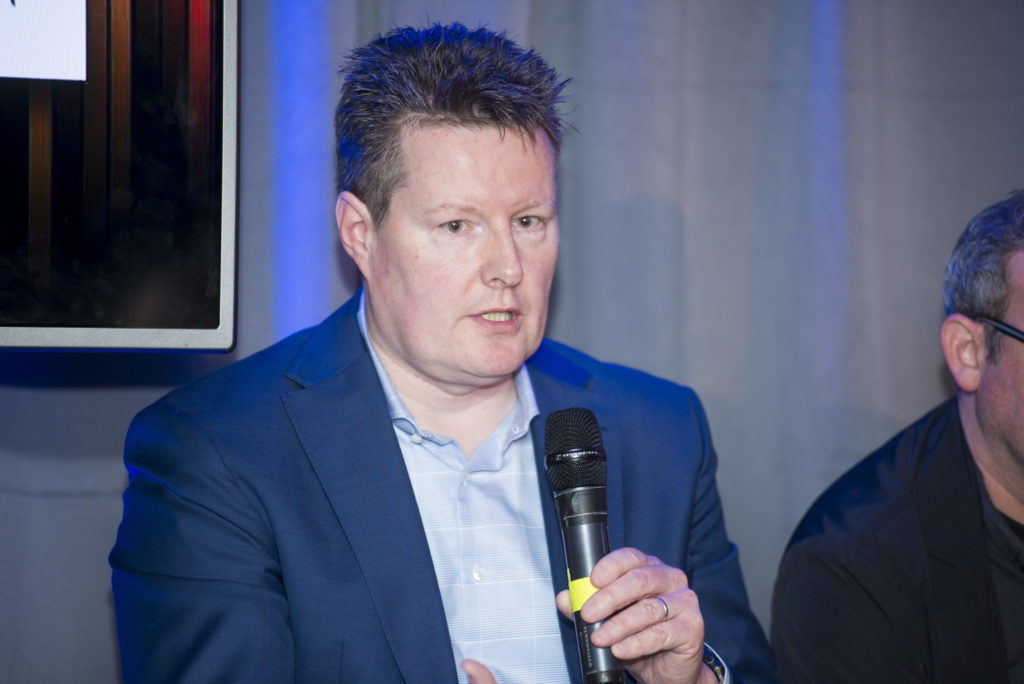
John Dunne began by saying that there was a contradiction in the marketing industry. We have never had more obscurity in media and marketing, but on the flip side there has never been more data and tools to get to certainty. It is for this reason that he sees independent and unbiased media advice as never more important.
He said, echoing what Jill McGrath said earlier in the day, that trying to draw parallels between linear TV and BVOD is a false comparison. TV ad measurement is a measure of an audience, BVOD is a measure of impressions.
We all know that average daily reach of TV audiences is under pressure, though not as much as some digital-first people would believe. What’s certain is that the days of relying on one channel to deliver all audiences is gone.
Digital is a much more complex landscape. As well as this, growth in digital advertising is starting to slow, though 63% of media spend is going to digital in Ireland.
Big tech has their sights set on TV, as evidenced by Prime Video, Apple TV +, Disney Plus, Facebook Watch, etc. Connected TV presents complex challenges especially how to unify media buys across all of the different platforms (linear, addressable, OTT, Digital video).
Some of the issues with the media & marketing industry that he highlighted included:
- Partial reporting has led to mismeasurement.
- PCAs need to avoid inconsequential reviews.
- Fast Data only allows us to focus on the here and now. This leads to short-termism.
- Vanity Metrics - Are we measuring what matters, you must understand what you can and can’t control.
- Avoid retrofitting targets of campaigns, be up front with what you want to achieve.
- Need for unified cross-platform measurement.
Some measures that are currently in place need to be replaced, such as:
- Price pooling to specific KPIs
- Opacity with Transparency
- Move from slow to fast
He also said that there is an over-reliance on media agency that needs to move to self-reliance by clients.

Vivienne McKetchnie laid out her principles for media audit:
- Transparency – Some agencies are operating undisclosed models. A media audit allows for the client to get a clearer idea of how their money is being spent.
- Compliance - Media is complex buy for procurement, for marketing departments to ensure that they’re compliant with the finance policies of the company they need auditors to check their homework.
- Value – Finally clients want to know what return they are getting on their investment and how efficiently their campaigns are being delivered
There is presently no media that we can perfectly assess by these three metrics. And, of course, human behaviour is never perfect so measuring these three perfectly is even more difficult.
She claimed that as an auditor she tends to focus on the areas that she sees as “big wins”, these are TV, PPC and Social.
From her perspective, what can auditors do better?
- Look to constantly innovate.
- Be the experts, if they’re not they have no right to audit others work.
- Look for the maximum positive effect. This is where she talked about the “big wins”, if TV is the biggest part of a campaign, then TV should be audited with the most attention.
- Aim to be more streamlined,
- Focus on “stop/start/continue”, what should the agency stop doing, start doing and what are they doing right that needs to continue.
What can agencies and clients do better?
- Client:
- Think of audit in the wider context of marketing.
- Pitch vs Audit: ensure measurement aligns by sticking to the strategic objectives that were laid out in the pitch
- Business objectives need to be brave, confident and shared
- Agency:
- Make sure that business objectives and media KPIs are aligned.
Vivienne would like to see full transparency as standard.
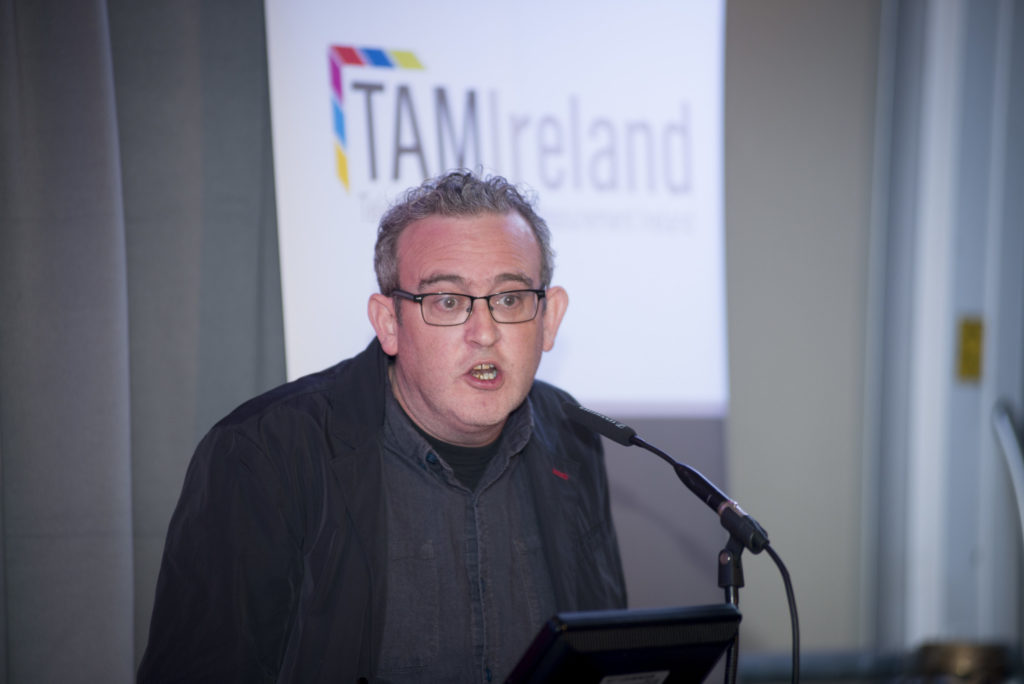
Nick Fletcher began by saying he believes that there is a role for media auditors, a key one. They offer transparency where there is confusion. Agencies have their own language and auditors can act as translators. There is a role for efficiency and there’s nothing wrong for being good value. Auditors reinforce this and remind agencies of their fiduciary commitment to their clients. Good that auditors put pressure on agencies and stop them getting complacent
Nick claimed, partially facetiously, that he doesn’t fully know what effectiveness is and that it’s overused. Every measurement should begin with “what is success?”. It’s different for every campaign, there’s no one size fits all metric. He said that it’s easy to buy a TV campaign that passes media audit norms, but that doesn’t guarantee effectiveness. There is a greater skill involved in what he does than passing the auditor test.
He claimed that there is a strong correlation between how engaged the consumer is and their action (propensity to buy), but it’s harder to measure than GRPs, etc. We’re able to track social commentary, like there is in X Factor for example, which shows there’s not huge engagement in the programme. This seems counterintuitive but if you’re tweeting, you’re hardly engaged in the programme. On the flipside, more engaging programmes such as drama can lead to better results.
Nick thinks that this new concept of contextual advertising is a load of s**te, as they’ve been doing it for years. It wasn’t considered innovative to put a baby food ad around a programme about babies in the past, this is not a new phenomenon. Auditors don’t take context into account and they should, because it's a key part of a planner’s job.
In summary, there is much more of a need for a conversation between agencies and auditors, this would lead to better outcomes for everyone involved. Clients and agencies should define success, agree upfront, measure on deliver on those and hold the agency to account based on these metrics.
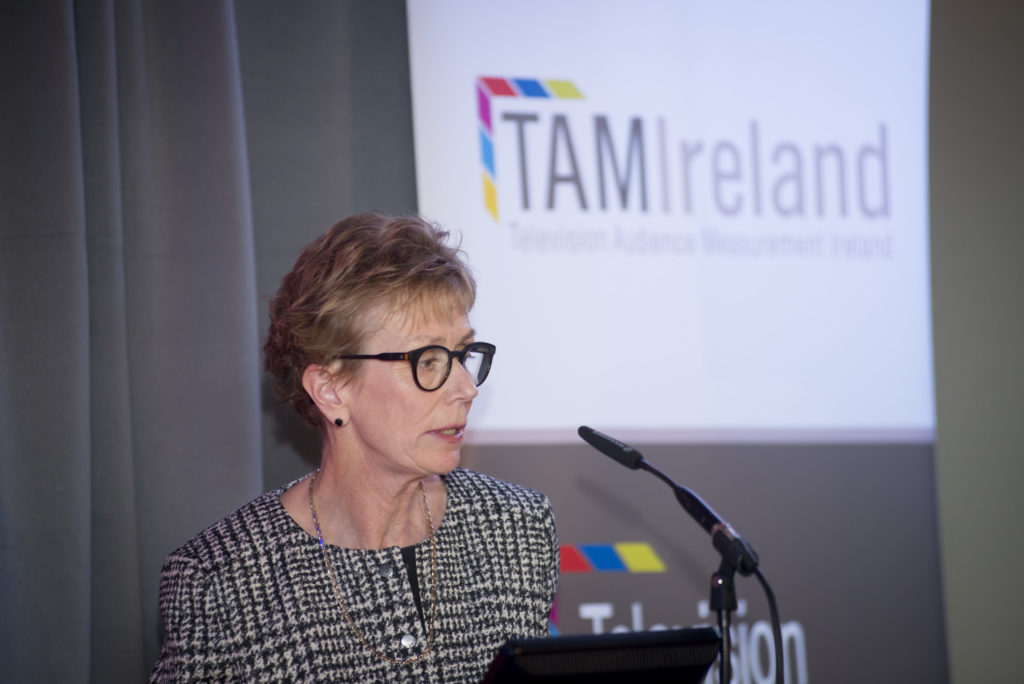
FM Marsh closed the event. She agreed in principle with a lot of what was said before. When planning, start in strategy and developing KPIs.
She then went on to explain why she thinks costs are important:
- Who’s going to check if the contracts are delivered? This is a very basic starting point but an important role for auditors
- During pitches they can judge if the costs are deliverable. This avoids agencies promising clients more that they can deliver and will lead to better outcomes for the clients.
- What about inflation? Auditors allow clients to understand media trends such as inflation which clients may not price into their marketing plans.
- What about ad serving and technology? Auditors give a clearer view of the murky waters of ad serving technology
How have Ebiquity Marsh changed over the past 10 years?
- They have continued to unearth bad practices in the media agencies which they believe has led to more effective marketing.
- They worked with Radio Centre on a piece of research to see perception vs reality across all media.
- They worked on a piece of research which demonstrated TV effectiveness.
- They had the tipping point of TV research.
When asked about the relationship between clients, agencies and auditors she said it was one of mutual respect.
She stated that, digital is like other media where brands have KPIs. However, digital is more specific so has different rules. So many, how do you measure all of them? She called for unifying metrics across BVOD, TV, VOD. There is a growing concern that we’re comparing apples with oranges. The streaming panel that TAM are introducing will help with this.
According to the ANA, only 54% -62% percentage of programmatic spend goes to publisher, this is too opaque and needs to be rectified.
As stated by other speakers she noted that TV is not dead, in fact it has the highest effectiveness of all advertising media. However, TV reach is going down, and what some might find scary is the abruptness of decline. She commended TAM for looking to increase the panel, which is great work and will lead to more robust measurement.
The key challenge, as she saw it for agencies and auditors alike is to have a holistic view. There is a need for strategy people to understand how channels and planning help create success for the brand.
She ended by saying that media auditing is more important than ever. The number of clients and the number of channels is increasing and in a fractured world auditors can help make more sense of the decisions being made by agencies.
